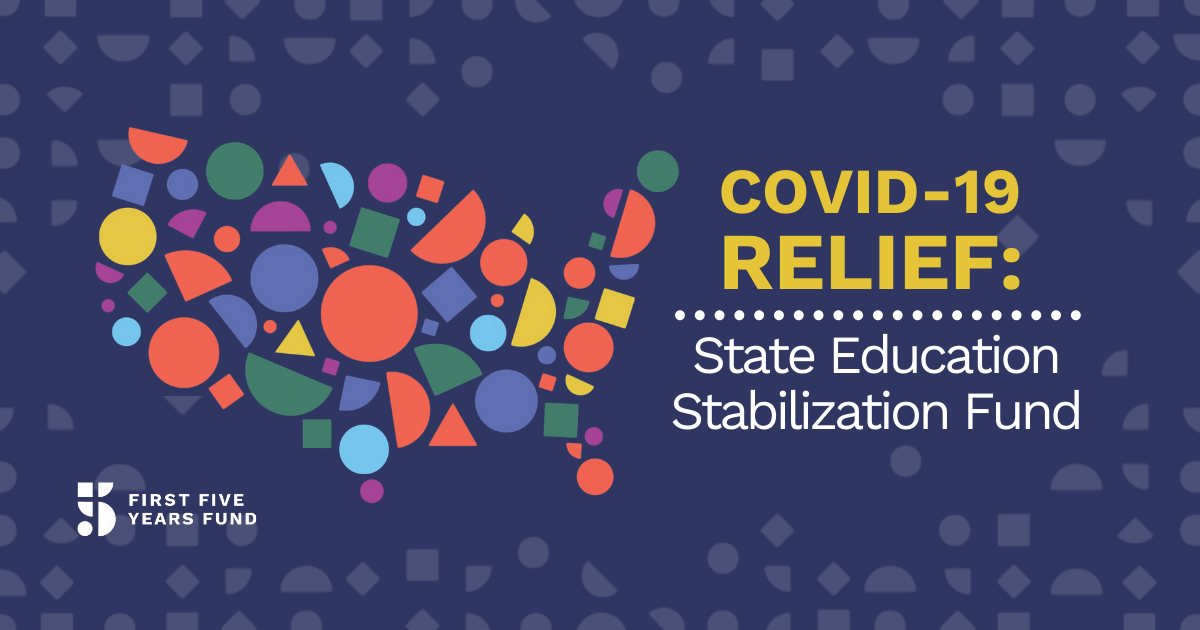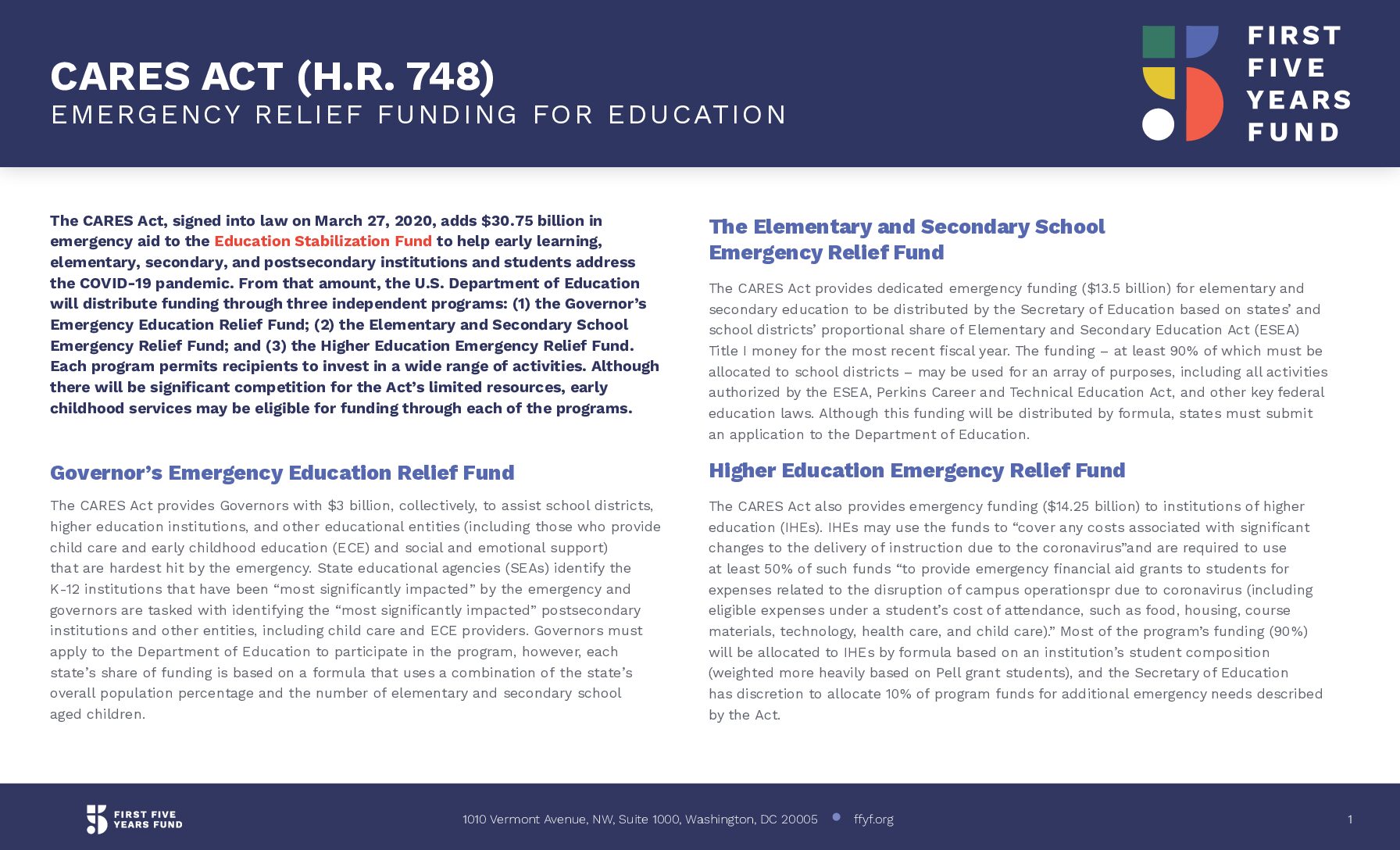Child Care & COVID-19: Emergency Relief Funding to States for Education

The CARES Act, signed into law on March 27, 2020, adds $30.75 billion in emergency aid to the Education Stabilization Fund to help early learning, elementary, secondary, and postsecondary institutions and students address the COVID-19 pandemic. From that amount, the U.S. Department of Education will distribute funding through three independent programs: (1) the Governor’s Emergency Education Relief Fund; (2) the Elementary and Secondary School Emergency Relief Fund; and (3) the Higher Education Emergency Relief Fund. Each program permits recipients to invest in a wide range of activities. Although there will be significant competition for the Act’s limited resources, early childhood services may be eligible for funding through each of the programs.
Governor’s Emergency Education Relief Fund
The CARES Act provides Governors with $3 billion, collectively, to assist school districts, higher education institutions, and other educational entities (including those who provide child care and early childhood education (ECE) and social and emotional support) that are hardest hit by the emergency. State educational agencies (SEAs) identify the K-12 institutions that have been “most significantly impacted” by the emergency and governors are tasked with identifying the “most significantly impacted” postsecondary institutions and other entities, including child care and ECE providers. Governors must apply to the Department of Education to participate in the program, however, each state’s share of funding is based on a formula that uses a combination of the state’s overall population percentage and the number of elementary and secondary school aged children.
The Elementary and Secondary School Emergency Relief Fund
The CARES Act provides dedicated emergency funding ($13.5 billion) for elementary and secondary education to be distributed by the Secretary of Education based on states’ and school districts’ proportional share of Elementary and Secondary Education Act (ESEA) Title I money for the most recent fiscal year. The funding – at least 90% of which must be allocated to school districts – may be used for an array of purposes, including all activities authorized by the ESEA, Perkins Career and Technical Education Act, and other key federal education laws. Although this funding will be distributed by formula, states must submit an application to the Department of Education.
Higher Education Emergency Relief Fund
The CARES Act also provides emergency funding ($14.25 billion) to institutions of higher education (IHEs). IHEs may use the funds to “cover any costs associated with significant changes to the delivery of instruction due to the coronavirus”and are required to use at least 50% of such funds “to provide emergency financial aid grants to students for expenses related to the disruption of campus operations due to coronavirus (including eligible expenses under a student’s cost of attendance, such as food, housing, course materials, technology, health care, and child care).” Most of the program’s funding (90%) will be allocated to IHEs by formula based on an institution’s student composition (weighted more heavily based on Pell grant students), and the Secretary of Education has discretion to allocate 10% of program funds for additional emergency needs described by the Act.
See below for more information about the Education Stabilization Fund provisions:
Subscribe to FFYF First Look
Every morning, FFYF reports on the latest child care & early learning news from across the country. Subscribe and take 5 minutes to know what's happening in early childhood education.




